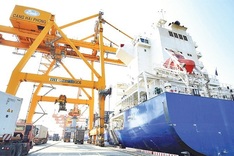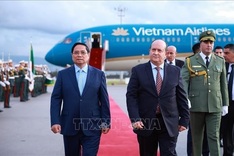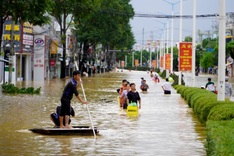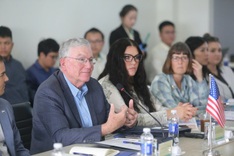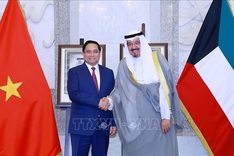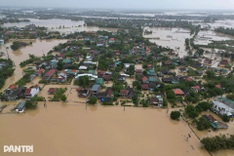
Import and export activities at Haiphong Port (Photo: nhandan.vn)
According to the Coordinating Council for the Red River Delta region, the regional provinces and cities have made significant progress in economic growth, state budget revenue, foreign direct investment (FDI) attraction, and tourism. Notably, their export turnover ranks among the highest in Vietnam.
The Ministry of Finance reported that in the first 10 months of 2025, Vietnam’s total foreign trade turnover reached USD 762.44 billion, up 17.4 per cent year-on-year, with a trade surplus of USD 19.56 billion. Many Red River Delta provinces posted strong export growth during this period.
Statistics show that Bac Ninh’s exports over the last ten months exceeded USD 77 billion, up 32 per cent year-on-year, with a trade surplus of nearly USD 5 billion. This province has consistently ranked among the top trading performers nationwide since August 2025 and also among the largest contributors to the country's total exports.
Following the administrative merger with Bac Giang, Bac Ninh’s industrial production and trade has witnessed a strong breakthrough. Its key industrial products have seen strong year-on-year expansion, including computer parts, peripheral devices, laptops, iPads, and smartphones. As a hub for hi-tech industrial production and exports, Bac Ninh now holds many advantages for scaling up export, particularly when foreign investors are still choosing the province as a production base.
So far this year, Bac Ninh has attracted about USD 16.2 billion in investment, ranking second nationwide. The export growth has been driven by core commodities such as computers, electronics, phones, and components produced by FDI enterprises.
Meanwhile, Ninh Binh ranked eighth nationwide in export turnover, with over USD 21 billion. To achieve this, the provincial Department of Industry and Trade has actively implemented plans to expand and diversify export markets and support businesses in obtaining origin certificates and self-certifying origin for exports.
Following the administrative merger, Hung Yen’s export turnover in the January-October period is estimated at nearly USD 10 billion.
The figure reflects businesses’ efforts to overcome challenges as well as the growing resilience of the local economy, which is strengthening its position through proactive innovation, technology investment, and product quality improvement. One key measure to boost exports in Hung Yen is administrative reform, with a particular focus on streamlining customs procedures.
The customs sector is actively implementing digital and smart customs models, applying artificial intelligence, blockchain, and big data to help businesses save time on cargo clearance, reduce financial and labour costs, and improve production and business efficiency.
Meanwhile, industry and trade authorities continue to support firms through many activities, including training in free trade agreements (FTAs); assisting with trade promotion and business networking; providing 100 per cent online public services for issuing certificates of origin (C/O); and coordinating in global market forecasting to help enterprises proactively plan their production and business activities.
Experts said with 16.2 per cent growth in the first 10 months and value exceeding USD 42 billion per month for the past four consecutive months, this year's export growth could far surpass the 12 per cent target. However, to this end, ministries, sectors, the business community, and localities, including those in the Red River Delta, must continue to make further efforts through the end of the year.
Relevant agencies need to boost connections between domestic and FDI businesses, help local firms integrate into FDI supply chains, and run targeted trade promotion programmes in key markets, including the EU, the US, China, Japan, the Republic of Korea, ASEAN, India, the Middle East, Africa, and Latin America.


